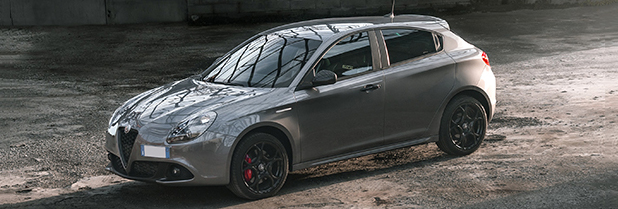
Automotive Applications

Ceramic materials make a significant contribution to improving economy, comfort, and safety as high-performance components for electric vehicles, electric buses, electric trucks, and electric trains. They are used in automotive mainly because they are lightweight, can withstand high temperatures, are capable of insulating thermally and electrically, exhibit excellent wear and corrosion resistance properties, and are safe and reliable.
Hybrid Vehicles
The recent advancements in battery technology are placing new demands on thermal management systems. For the next-generation hybrid vehicles, ceramic materials can be applied to thermally manage batteries, electric motors, and charging devices, as well as different substrates for high-voltage and low-voltage circuit carriers. In addition, precision-engineered ceramic shafts and bearings are used in the water-cooling pumps of next-generation hybrid vehicles for cooling critical engine electronics and lithium-ion batteries.
Sensor Technology
Piezo ceramic components act as electronically controlled sensors and provide vehicles with information about engine operation, position, and orientation changes. Ceramic materials are often used in the following sensors in the automotive industry: acceleration sensors, knock sensors, liquid level sensors, parking distance sensors, etc.
Exhaust Manifolds
Protecting a vehicle's electronic engine management system from the high temperatures surrounding the engine is a major challenge for design engineers. A ceramic coating can be added to the surface of the exhaust manifold to improve its performance. Ceramic coatings reduce back pressure, lower surface temperatures, and prevent corrosion. In addition, the use of ceramic materials can also reduce engine noise.
Diesel Particulate Filters
The segments of a diesel particulate filter (DPF) are bonded together using a ceramic paste composed of specially engineered low bio-persistent fibers. The application properties of the paste are controlled by these fibers during production. In addition, these fibers deliver the thermal shock performance essential for the high-temperature regeneration cycle used for filter cleaning during driving the vehicle.
Brake Pads
Ceramic products not only have excellent chemical resistance to glycol coolants and long service life but are also lightweight, which contributes to improved fuel efficiency and low noise operation. For example, boron carbide ceramics are used in vehicle brake pads, and silicon carbide ceramics are used in high-performance brake discs because of their ability to withstand extreme temperatures.
Further Reading: List of Areas Where Ceramic Materials are Used in the Automotive Industry
- Your Name (required)
- Your Email (required)
- Company Name (required)
- Country (required)
- Your Phone (Optional)
- Ceramics (Optional)
- Notes (Optional)
-
Attachment (Optional)
No file chosen
-







